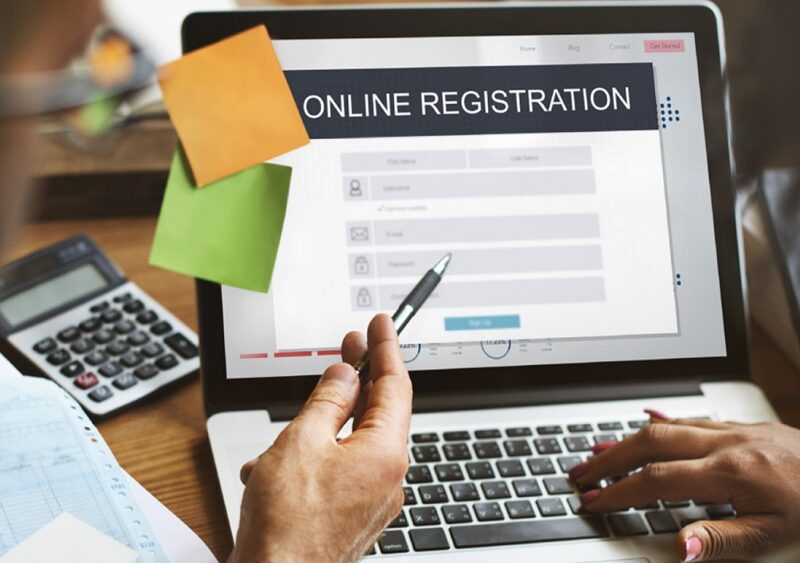Are you ready to turn your passion into a profitable business venture? Congratulations! Starting a business is an exciting journey filled with endless possibilities, but it can also be overwhelming. One of the crucial steps in launching a successful enterprise is registering it legally. Fortunately, you no longer have to go through the tedious process of visiting government offices and filling out piles of paperwork. With today’s technology, you can register your business online hassle-free! In this blog post, we’ll guide you through all the necessary steps to get your business up and running smoothly so that you can focus on what really matters – growing your brand and making it thrive! Here is a more in-depth guide on how to register a business.
Introduction
If you’re starting a business, you’ll need to register it with the government. This process can be done entirely online, and we’ve put together a step-by-step guide to help you get started.
First, you’ll need to choose a business structure. There are four main types of business structures in the United States: sole proprietorship, partnership, limited liability company (LLC), and corporation. You can read more about each type of business structure on the Small Business Administration’s website.
Once you’ve chosen a business structure, you’ll need to obtain a business licence or permit from your local government. The requirements for this vary depending on your location and type of business, so be sure to check with your local government office for more information.
After you’ve obtained your licence or permit, you’ll need to register your business with the IRS by obtaining an Employer Identification Number (EIN).
Once your business is registered and licensed, you’ll need to open a bank account in order to start accepted payments from customers. Be sure to bring all of the required documents (listed on the SBA website) when opening your account.
Now that your business is up and running, be sure to stay compliant with all state and federal regulations. This includes filing annual reports and taxes as required by your state government. Failure to do so could result in penalties or even shutdown of your business.
What is a Business Registration and Why is it Important?
A business registration is the process of registering your business with the government. This is important because it allows the government to keep track of businesses and their activity. It also allows businesses to obtain licences and permits, which are required for many business activities. The process of registering a business can vary depending on the country in which you are doing business. However, most countries require businesses to register with the local government office responsible for business regulation.
Step-by-Step Guide to Registering a Business Online
Assuming you’ve already chosen your business structure and obtained any necessary licences and permits, you’re ready to register your business. Here’s a step-by-step guide to help you get started:
- Choose a business name. This is usually the first step in registering any business, online or offline. Your business name should be reflective of what you do and easily identifiable to potential customers. Once you’ve chosen a name, check to see if it’s available as a domain name (i.e., www.[yourbusinessname].com). If it’s not available, try variations or different spelling until you find an available domain.
- Set up a website. Even if you don’t plan on selling anything online, having a website is essential for promoting your business and building credibility with potential customers. (like Wix or Squarespace) that can help you get started quickly and easily.
- Register your domain name. Once you’ve found an available domain name that reflects your business name, you’ll need to register it so that no one else can use it. This usually involves paying an annual fee to a domain registrar like GoDaddy or Namecheap.
- Get a business email address. Using a professional email address (@yourbusinessname.[com]) helps promote your brand and build trust with potential customers.
– Choose Your Legal Structure
The first step in registering your business is choosing the legal structure that best suits your needs. There are four main business structures in the United States: sole proprietorship, partnership, limited liability company (LLC), and corporation. Each has its own advantages and disadvantages, so it’s important to choose the one that will work best for you.
Sole Proprietorship: A sole proprietorship is the simplest and most common type of business structure. This type of business is owned and operated by one person, and there is no legal distinction between the owner and the business. Sole proprietorships are easy to set up and require very little paperwork. However, sole proprietorships offer no personal liability protection for the owner, meaning that if the business fails, the owner’s personal assets are at risk.
Partnership: A partnership is a type of business structure in which two or more people share ownership of the business. Partnerships can be either general partnerships or limited partnerships. General partnerships are relatively easy to set up and offer personal liability protection for all partners. Limited partnerships are more complex and offer only limited liability protection for some partners.
Limited Liability Company (LLC): An LLC is a type of business structure that offers personal liability protection for its owners. LLCs are similar to corporations in many ways, but they are easier to set up and maintain.
– Choose Your Business Name
Before you can register your business, you need to choose a name. This can be a tricky process, but there are a few things you should keep in mind. First, try to come up with a name that is unique and memorable. It should also be relevant to your business and reflective of the products or services you offer. Once you have a few potential names in mind, do some research to make sure they are available. You can search for business names on the Secretary of State website or the USPTO website. Once you have found an available name, you can proceed with registering your business online.
– Obtain an EIN (Employer Identification Number)
If you’re starting a business, you’ll need to obtain an Employer Identification Number (EIN) from the IRS. This number is used to identify your business for tax purposes.
You can apply for an EIN online, by mail, or by fax. The process is relatively simple and can be done in a matter of minutes.
Once you have your EIN, be sure to keep it in a safe place. You’ll need it anytime you file taxes or open a bank account for your business.
– File for a DBA (Doing Business As)
If you’re planning on doing business under a name other than your own, you’ll need to file for a DBA (Doing Business As). A DBA is also sometimes referred to as a fictitious business name or trade name. Filing for a DBA allows you to conduct business under a name that is different from your personal name, the name of your LLC or corporation, or the officially registered name of your partnership.
There are a few different ways to go about filing for a DBA. You can do it yourself online, through the mail, or in person. The process and requirements vary slightly depending on how you choose to file.
If you’re filing for a DBA online, the first thing you’ll need to do is search the database of your state’s Secretary of State website to see if the desired business name is available. If it is, you’ll be able to proceed with the online application. The application will require you to provide some basic information about your business, such as your contact information and the type of business entity you’re registering (sole proprietorship, LLC, etc.). Once you’ve completed the application and paid the filing fee (if applicable), your DBA will be officially registered.
If you choose to file by mail or in person, you’ll need to obtain the appropriate form from your state’s Secretary of State office and complete it with all of the required information. Once the form is complete, simply submit it along with
– Register with the State
To register your business with the state, you will need to provide some basic information about your company, including its name, address, and contact information. You will also need to select a business structure and obtain a federal tax ID number. Once you have gathered all of this information, you can begin the online registration process.
– Apply for Local Licences and Permits
Before you can open for business, you’ll need to obtain the proper licences and permits from your local government. The process for doing so can vary depending on your location, but there are a few general steps you can follow:
- Determine what licences and permits you need. Depending on the type of business you’re starting, you may need special licences or permits from your city or state. Do some research online or contact your local chamber of commerce to find out what’s required.
- Obtain the necessary forms. Once you know which forms you need, you can usually obtain them from your city or county clerk’s office.
- Complete the forms and submit them along with any required fees. Be sure to complete the forms correctly and include all of the required information; otherwise, your application may be rejected.
- Wait for approval. Once your application is submitted, it will be reviewed by the appropriate agency. If everything is in order, you should receive your licence or permit within a few weeks.
Conclusion
We hope this guide has helped you understand the process of registering your business online and how to take the first steps towards achieving your entrepreneurial dreams. With the right guidance, tools and information, starting a business can be an exciting endeavor that puts you at the helm of something amazing. So if you are looking for a way to make your mark in today’s world, consider taking these steps and setting up shop from home! Good luck on your journey!

